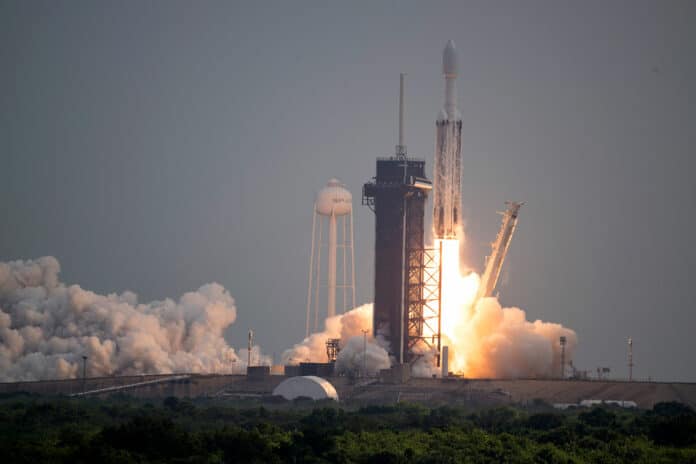NASA’s Psyche spacecraft is on its voyage to a unique metal-rich asteroid of the same name orbiting the Sun between Mars and Jupiter. The mission will explore a metal-rich asteroid that may shed light on our own planet’s formation.
NASA’s $1.2 billion Psyche mission lifted off aboard SpaceX Falcon Heavy rocket on October 13, 2023, at 10:19 am EDT from Launch Complex 39A at NASA’s Kennedy Space Center in Florida.
Psyche spacecraft also carries the agency’s Deep Space Optical Communications technology demonstration, which will test laser communications beyond the Moon. Deep space laser communications could support future exploration missions by providing more bandwidth to transmit data than traditional radio frequency communications.
After less than five minutes of liftoff, the rocket’s second stage climbed to a high enough altitude, and the fairings separated from the rocket, returning to Earth. An hour after launch, the spacecraft separated from the rocket, and ground controllers waited for a signal from the spacecraft.
The Psyche spacecraft then commanded itself into a safe mode, completing only minimal engineering activities while waiting for further commands from the mission controllers on Earth. Finally, the Psyche established two-way communication with NASA’s Deep Space Network complex in Canberra, Australia, at 11:50 a.m. EDT. Initial telemetry reports indicate that the spacecraft is in good health.
By August 2029, the spacecraft will commence orbiting around Psyche, which is a 173-mile-wide (279-kilometer-wide) asteroid – the only metal-class asteroid ever to be explored. Scientists have hypothesized that Psyche’s high iron-nickel metal content could be the partial core of a planetesimal, which is a building block of an early planet. The aim of the mission is to conduct a 26-month-long science investigation.
“We said ‘goodbye’ to our spacecraft, the center of so many work lives for so many years – thousands of people and a decade,” said Lindy Elkins-Tanton, Psyche principal investigator at Arizona State University in Tempe. “But it’s really not a finish line; it’s a starting line for the next marathon. Our spacecraft is off to meet our asteroid, and we’ll fill another gap in our knowledge – and color in another kind of world in our solar system.”
